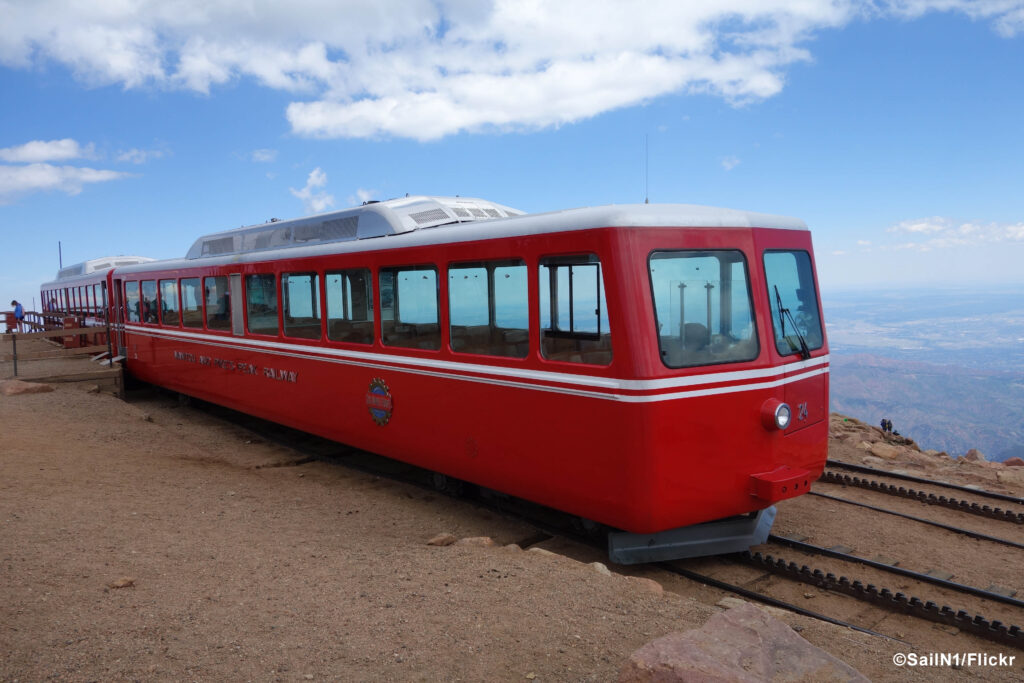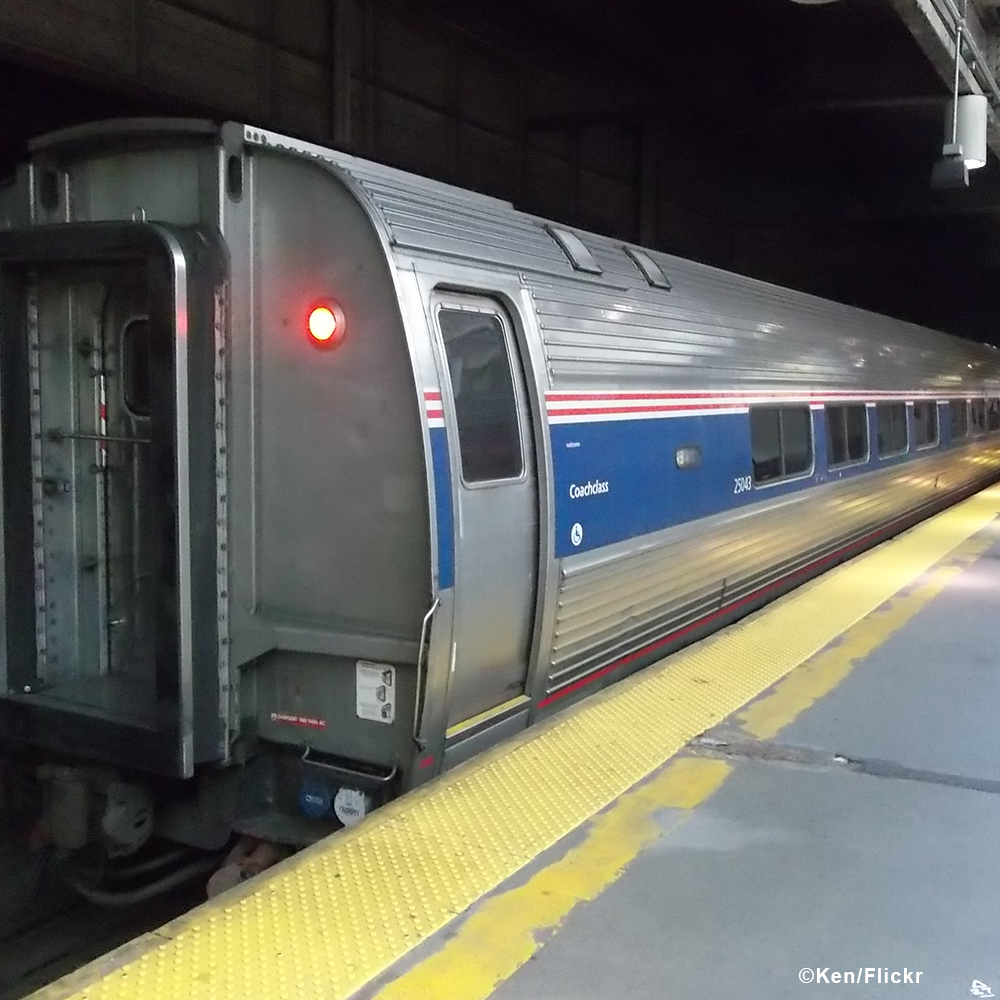Will Amtrak be the future of intercity travel? Not likely
by William L. Anderson | April 26, 2024
One of the things I enjoy hearing each weekday morning living in Roseville, California, is the horn of the Capital Corridor Amtrak train that leaves the Roseville station at 7:07, give or take a minute. We often can set our watches by it.
When taking family and friends to San Francisco, we usually don’t drive but rather take the 7:07 to Emeryville, catch an Amtrak bus over the Bay Bridge, and spend the day in the city (doing the touristy things, of course). The trip is relaxing and relatively stress-free, unlike driving to the Bay Area on I-80 where traffic is heavy and hazardous to our mental health.
Our Amtrak travels have not been limited to the Capital Corridor, as my wife and I have taken three overnight Amtrak trains, twice going from Seattle to Sacramento and once to Denver, as well as a trip to Reno, traversing the old Union Pacific line over the Sierras. Our Denver trip involved many spectacular miles along the Colorado River through both the Mesa Country in western Colorado and the famous Rocky Mountains. For us, it has been money well spent.
Is this an endorsement of Amtrak? Not really. While I enjoy riding Amtrak, the idea that this should be the travel of the future is not realistic. Furthermore, there is a reason Amtrak is poorly capitalized, and it isn’t because politicians have been stingy with funding.
When Joe Biden became president, hopes ran high that the man who took Amtrak home to Wilmington, Delaware, every day from Washington when he was a U.S. Senator would direct billions of dollars to the national rail system. The White House announced that it was going to funnel up to $66 billion to make American passenger rail “world-class.” In the eyes of Washington and progressive rail advocates, all it takes is funding.
The current state of rail travel right now does not resemble anything that is “world class.” On our overnight trips, we traveled in sleeper cars built in the 1970s with one electrical outlet near the sink to accommodate our electronic gear and recharge our phones and watches. We were comfortable enough, although we paid prices that would have put us in a five-star hotel with a sumptuous meal to boot. Because we like rail travel and because we were curious to see the Sierras and Rockies from the level that only the rails can provide, we gladly paid the prices.
Had we desired speed and lower prices, we would have flown to Denver and Sacramento (putting up with the stress of flying and the relative discomfort of sitting in coach). Furthermore, on long-distance trail travel, one must deal with “Amtrak time.” On both our Reno and Denver trips, we rode the Zephyr, which runs between Chicago, Illinois and Emeryville. The Amtrak that took us to Reno was five hours late, and we rode into Denver about four hours behind schedule. Given that Amtrak must share track with freight railroads on the long-haul passenger routes, delays are inevitable.
To hear rail advocates tell it, all that is needed is “funding.” According to The New York Times:
Officials up and down the East Coast have long agitated for money to help replace crumbling bridges and tunnels along the Northeast Corridor, the heavily traveled route between Washington and Boston. After decades of underinvestment, the $1 trillion infrastructure bill that President Biden signed last month is poised to deliver much-needed improvements.
The funding includes the largest investment in passenger rail since the creation of Amtrak in 1971, handing the agency billions of dollars to address its repair backlog, modernize its fleet and reduce trip times. The $66 billion in new funding for rail could also fuel Amtrak’s expansion in its routes across the country, an elusive goal that could generate millions more in revenue for the agency and extend its network to new areas.
Unfortunately, the Times has the terminology wrong. Amtrak does not invest. As a government-owned “corporation” that always faces losses, Amtrak does not make a return on its capital. Unlike real profit-seeking firms that invest in capital to improve quality, lower costs, and make a return on that investment, Amtrak is a government entity whose new capital might provide a more pleasant ride and garner the agency good publicity, but does not improve Amtrak’s bottom line.


For example, when we were in Colorado, my wife and I rode the newly refurbished Pikes Peak Cog Railway to the top of the famous mountain. The owners of the railway, the Broadmoor Resort in Colorado Springs, spent $100 million on new track, engines and cars for the purpose of making a profit. While the railroad received great publicity for its new look, the value of the acquired capital is tied to financial results, not political benefits.
Government projects such as Amtrak are funded via congressional appropriations and those monies are politically directed. While there is nothing wrong with rebuilding or stabilizing bridges and tunnels – given they are dealing with safety issues – one should not confuse political benefits with economic benefits. Even if Biden’s dream of vastly expanding Amtrak’s footprint fails to materialize, Biden still gains positive publicity for his “vision” and members of Congress that vote for this funding scheme are seen as “serving” their constituents.
Amtrak is mostly a wealth-transfer mechanism in which people who ride at the subsidized fares receive benefits at the expense of people who pay taxes but don’t ride trains. Likewise, people who work for Amtrak or who serve as vendors also benefit from the wealth transfers. For the Pikes Peak Cog Railway, additional riders mean revenues and a profit; for Amtrak, more riders mean more subsidies.
This even goes for Amtrak’s famed Northeast Corridor that allegedly makes a small profit but, on closer examination, does not. It operates with aging cars and a large maintenance backlog that if applied in normal accounting procedures would quickly turn black ink into red.
If Amtrak really were to expand to the level that, according to Bloomberg, would “transform” the “nation’s mobility landscape,” the rail corporation would have to quickly come up with new cars to carry passengers even when its current fleet is inadequate.
One doubts that Amtrak could even find new cars and would likely have to pull up cars that have been out of service for years. Furthermore, the expansion envisioned by the Biden administration would require a lot more funding for maintenance, and given that Amtrak already is well behind in that department, a literal train wreck due to maintenance issues could well be in the future.
It is one thing to enjoy the spectacular view of Glenwood Canyon through the windows of an Amtrak observation car. However, it is quite another to believe that a government agency that already is poorly capitalized suddenly is going to become a world-class, modern railway system because of new funding injections. President Biden may love Amtrak, but he cannot love it enough to turn it into something it can never be.
William L. Anderson is an editor with the Mises Institute and Emeritus Professor of Economics at Frostburg State University, Frostburg, Md. He lives in California.
